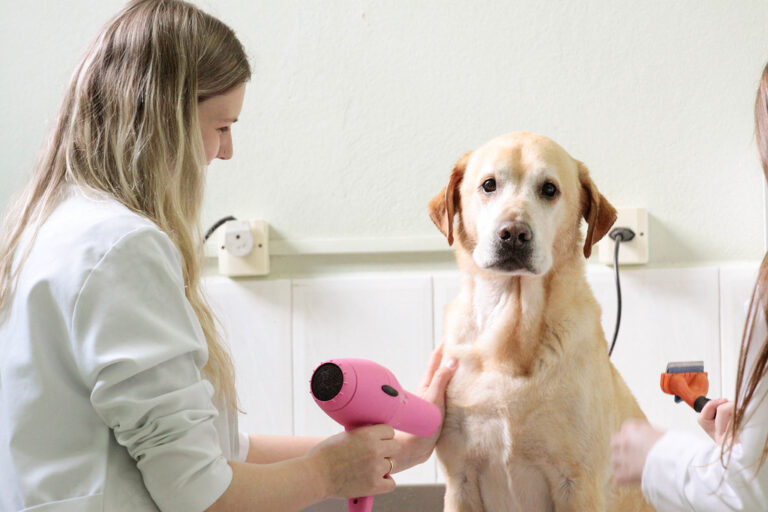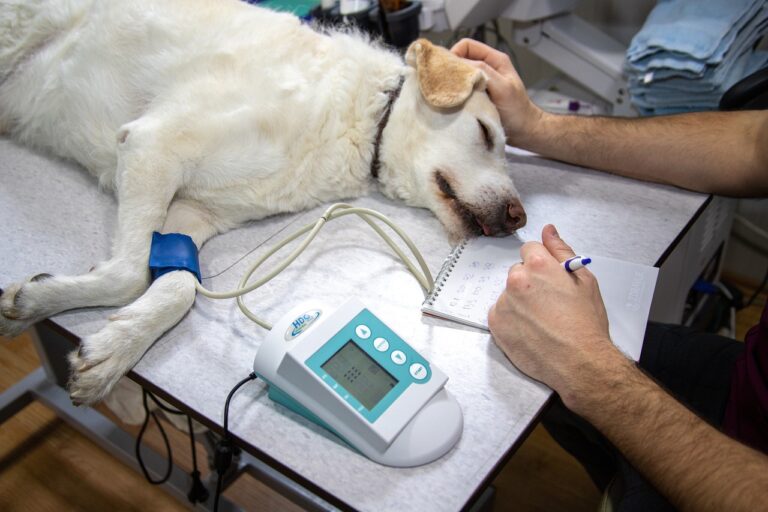Exploring the Possibilities: Labrador Retriever Mixes Pros and Cons
Labrador Retriever Mixes: Pros and Cons
When considering adding a furry friend to your family, Labrador Retriever mixes offer a wonderful combination of traits. These mixed breeds inherit the friendly and outgoing personality traits of their Labrador Retriever parent, making them great companions for individuals and families alike. In this section, we’ll explore the benefits and health considerations of Labrador Retriever mixes.
Benefits of Labrador Retriever Mixes
One of the primary benefits of Labrador Retriever mixes is their genetic diversity. As mixed breed dogs, they tend to have a wider gene pool compared to purebred Labradors. This genetic diversity can result in fewer health issues, as they are less likely to inherit genetic conditions that are common in purebred Labs (Purina UK). Mixed breed dogs, including Labrador Retriever mixes, are generally less prone to genetic health issues due to their diverse genetic makeup.
Labrador Retriever mixes also often combine the physical characteristics of Labs with a variety of other breeds. This unique blend can result in a wide range of appearances, allowing you to find a mix that suits your aesthetic preferences. Whether you’re looking for a smaller-sized Labradoodle or a larger Goldador, there is a mix out there to fit your desired size and appearance.
Health Considerations of Labrador Retriever Mixes
Labrador Retriever mixes are generally healthier compared to purebred Labradors. The genetic diversity resulting from crossbreeding can help reduce the risk of inheriting certain genetic conditions that affect purebred Labs (Purina UK). Mixed breed dogs, including Labrador mixes, tend to live longer and have a reduced risk of inheriting specific health issues associated with purebred Labs. It is important to note that while mixed breeds may have fewer health problems, they are not immune to all health issues. Regular veterinary check-ups and proper care are still essential for maintaining the well-being of your Labrador Retriever mix.
When choosing a Labrador Retriever mix, it’s important to consider both the benefits and potential health concerns. While mixed breeds generally have lower rates of inherited conditions, it’s still crucial to understand the potential health risks associated with the specific breeds involved in the mix. Learning about the common health issues of Labrador Retrievers and their mixed breed counterparts can help you make an informed decision and ensure that you can provide the necessary care for your furry friend. Regular exercise, a balanced diet, and proper veterinary care are vital for the overall health and well-being of your Labrador Retriever mix.
By weighing the benefits and health considerations of Labrador Retriever mixes, you can make an informed decision that aligns with your lifestyle, preferences, and commitment to providing the best care for your four-legged companion.
Understanding Labrador Retriever Mixes
Labrador Retriever mixes are known for their unique blend of traits and characteristics. When considering a Labrador Retriever mix, it’s important to understand the variability in their appearance and temperament, as well as their training and socialization needs.
Variability in Appearance and Temperament
Labrador mixes can have unpredictable appearances and personalities, making it challenging to predict how they will turn out as adults in terms of size, coat type, shedding, and temperament. Labrador Retriever mixes tend to inherit both the physical and personality traits of their parent breeds, creating a diverse range of appearances and temperaments within this group. These variations can be a pro for those seeking a unique and individualized pet, but a con for those looking for predictable characteristics.
It’s important to research and consider the characteristics of both the Labrador Retriever and the other breed involved in the mix before adopting a Labrador mix. Labrador mixes can inherit characteristics from their non-Labrador parent that may affect their temperament, size, and grooming needs, which can vary widely among different mixes. By understanding the traits of both parent breeds, you can gain a better idea of what to expect from your Labrador Retriever mix.
Training and Socialization Needs
Training and socialization are vital for all dogs, including Labrador Retriever mixes. The specific training needs of a Labrador mix will depend on the individual dog and the traits inherited from their parent breeds. However, it’s important to note that Labrador Retrievers are generally intelligent and eager to please, making them relatively easy to train.
Consistency, positive reinforcement, and early socialization are key when training Labrador Retriever mixes. They thrive in an environment that provides clear boundaries, positive reinforcement, and plenty of mental stimulation. Consider enrolling in obedience classes or working with a professional trainer to ensure your Labrador mix receives the proper training and guidance they need to become well-behaved and well-adjusted dogs.
Socialization is equally important for Labrador Retriever mixes. Introduce them to various people, animals, and environments from a young age to help them become comfortable and confident in different situations. Regular socialization helps prevent behavioral issues and promotes a friendly and well-rounded companion.
Remember, each Labrador Retriever mix is unique, so training and socialization strategies may vary. Tailor your approach to meet the specific needs of your individual dog, and seek guidance from professionals if needed.
Understanding the variability in appearance and temperament, as well as the training and socialization needs, of Labrador Retriever mixes can help you make an informed decision when considering this type of dog. By being prepared for the potential variations and investing in their training and socialization, you can provide a loving and fulfilling life for your Labrador Retriever mix.
Popular Labrador Retriever Mixes
Labrador Retriever mixes have gained popularity due to their unique combinations of traits and characteristics. These mixes often inherit some of the best qualities from both parent breeds, resulting in delightful companions. Here are three popular Labrador Retriever mixes to consider:
Labradoodle: Labrador Retriever + Poodle
Labradoodles are a crossbreed between a Labrador Retriever and a Poodle. They have gained significant popularity for their intelligence, trainability, and hypoallergenic qualities. Labradoodles often combine the friendly and outgoing nature of Labrador Retrievers with the low-shedding and hypoallergenic coat of Poodles. These traits make them an excellent choice for families with allergies or those seeking a companion with minimal shedding. Labradoodles are known for their versatility and can excel as family pets, therapy dogs, or even service animals (Pet Helpful).
Goldador: Labrador Retriever + Golden Retriever
The Goldador is a crossbreed between a Labrador Retriever and a Golden Retriever. Combining the friendly and sociable nature of both parent breeds, Goldadors are known for their affectionate temperament and loyalty. They are often excellent family pets, getting along well with children and other pets. Goldadors are also highly trainable and adaptable, making them suitable for various roles, including therapy work, search and rescue, and assistance tasks. With their intelligence and gentle disposition, Goldadors bring joy and companionship to many households (Pet Helpful).
Bassador: Labrador Retriever + Basset Hound
A Bassador is a mix between a Labrador Retriever and a Basset Hound. This unique combination brings together the loyalty and affection of the Labrador Retriever with the distinct appearance and scent-tracking abilities of the Basset Hound. Bassadors are known for their friendly and easygoing nature, making them great family pets. They are generally good with children and socialize well with other animals. Bassadors may exhibit traits from both parent breeds, but they often have a loving and playful personality. With their unique appearance and charming character, Bassadors bring a special touch to any household.
When choosing a Labrador Retriever mix, it’s important to consider your lifestyle, preferences, and the specific traits of each mix. Understanding the characteristics and needs of the parent breeds can help you make an informed decision. Whether you opt for a Labradoodle, Goldador, Bassador, or any other Labrador Retriever mix, remember that each individual dog will have its own unique personality and requirements. Take the time to get to know the dog, and consider consulting with breeders, shelters, or rescue organizations to find the perfect match for you and your family.
Choosing a Labrador Retriever Mix
When considering Labrador Retriever mixes, it’s important to take into account your lifestyle and preferences. Labrador mixes can inherit various traits from their non-Labrador parent, resulting in a unique combination of characteristics that may suit different lifestyles and preferences. Factors such as activity level, size, grooming needs, and temperament should be considered when choosing the right mix for you.
Lifestyle and Preferences
Before bringing home a Labrador Retriever mix, it’s crucial to assess whether their energy levels and exercise needs align with your lifestyle. Labrador Retrievers are known for their high energy levels and require regular physical activity and mental stimulation to prevent boredom and destructive behavior. Each mix may have different activity requirements depending on the other breed involved. For example, a Labrador Retriever + Poodle mix (Labradoodle) might have a slightly lower energy level compared to a Labrador Retriever + Golden Retriever mix (Goldador).
Consider your living situation as well. Some mixes may thrive in larger homes with access to a yard, while others can adapt well to apartment living. It’s important to provide enough space and exercise opportunities for your Labrador Retriever mix to stay happy and healthy.
Additionally, think about your preferences in terms of size, coat type, and grooming needs. Labrador mixes can have a wide range of coat types, from short and dense to longer and wavy. If you prefer a low-shedding option, a mix with a Poodle parent may be more suitable. However, keep in mind that even low-shedding mixes may require regular grooming to prevent matting and maintain a healthy coat.
Health Concerns and Expenses
One of the advantages of Labrador Retriever mixes is that they tend to have fewer health problems compared to purebred dogs, as mixed breeds generally have lower rates of inherited conditions. However, it’s important to note that Labrador mixes can still inherit health issues from their non-Labrador parent.
To ensure the overall well-being of your Labrador Retriever mix, it’s essential to be prepared for potential health concerns and associated expenses. Regular veterinary check-ups, vaccinations, preventive medications, and a nutritious diet are important aspects of responsible pet ownership. Consider the potential costs of routine care, as well as the financial implications of unexpected veterinary expenses.
By considering your lifestyle, preferences, and potential health concerns, you can make an informed decision when selecting a Labrador Retriever mix that suits your needs. Remember to also factor in the time and commitment required to provide proper training, socialization, and care for your new furry companion.
Caring for Labrador Retriever Mixes
When it comes to caring for your Labrador Retriever mix, there are a few key areas to focus on. In this section, we will discuss the importance of exercise and mental stimulation, as well as grooming and shedding maintenance for your furry companion.
Exercise and Mental Stimulation
Labrador Retriever mixes are known for their high energy levels and require regular exercise to keep them physically and mentally stimulated. Daily walks, runs, and playtime in a secure, fenced yard are beneficial for these active dogs. Engaging in activities that challenge their minds, such as puzzle toys, obedience training, and interactive games, is equally important to prevent boredom and destructive behavior (DogTime). Mental stimulation helps keep their intelligent minds sharp and satisfied.
| Exercise and Mental Stimulation for Labrador Retriever Mixes |
|---|
| Regular exercise through walks, runs, and playtime |
| Engage in mentally stimulating activities like puzzle toys |
| Incorporate obedience training and interactive games |
| Provide an outlet for their intelligence and energy |
By providing your Labrador Retriever mix with ample exercise and mental stimulation, you can help them lead a happy and well-balanced life.
Grooming and Shedding Maintenance
Labrador Retriever mixes have a moderate to high shedding level, and their coat may require regular grooming to manage loose hair and prevent matting (DogTime). The shedding frequency and amount may vary depending on the specific mix of breeds, so it’s important to be prepared for potential grooming needs (DogTime). Some mixes may have shorter coats that require minimal grooming, while others may have longer hair that needs more frequent brushing and occasional professional grooming.
| Grooming and Shedding Maintenance for Labrador Retriever Mixes |
|---|
| Regular brushing to manage loose hair |
| Preventing matting and tangles with grooming sessions |
| Checking for skin issues, ear infections, and dental problems |
| Additional grooming during shedding seasons |
To maintain your Labrador Retriever mix’s coat, establish a grooming routine early on and introduce them to grooming tools and procedures gradually. Regular grooming sessions not only help manage shedding but also provide an opportunity to check for any skin issues, ear infections, or dental problems (Daily Paws). Be sure to be gentle and patient during grooming to ensure your furry friend feels comfortable and cooperative.
By prioritizing exercise, mental stimulation, and proper grooming, you can help your Labrador Retriever mix thrive physically and mentally. Remember to tailor their care to their specific needs and consult with a veterinarian or professional groomer for any additional guidance.






